
views
Selecting a Running Wheel
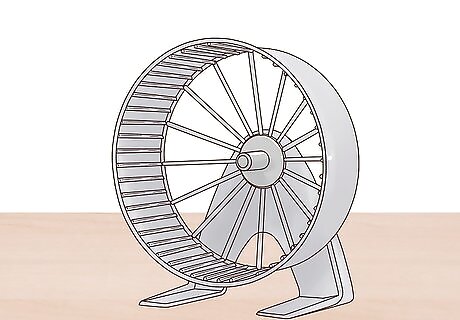
Opt for a sturdy metal wheel that your mouse can’t chew through. If you purchase your mouse a wheel made of light plastic, your mouse may chew it to pieces. So, purchase a more heavy-duty (and slightly more expensive) metal wheel. If the wheel squeaks after frequent usage, rub a little petroleum jelly on the friction point. You can also buy your mouse a thick, heavy plastic wheel, since they won’t be able to chew their way through this material either. However, plastic wheels may squeak, and cannot be greased like metal wheels can.

Buy a wheel with a solid plastic or mesh running surface. If you give your mouse a wheel with metal or plastic rungs, their feet can be caught between the rungs. This can result in your mouse breaking its ankle or leg. Avoid this painful—and dangerous—outcome by giving your mouse a wheel that has a solid surface. Mesh wheel surfaces are the easiest to clean.
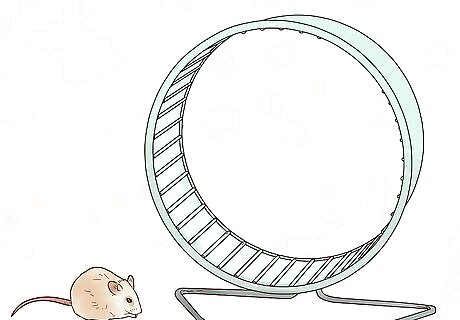
Choose a wheel that allows your mouse to run without bending its back. A mouse should be able to run on a wheel as it would in nature: with its legs fully extended and its back straight. For this reason, large wheels are always better for mice to run on than small wheels. When you’re purchasing a wheel for your mouse, visually estimate the mouse’s size to confirm it could run on the wheel without bending its back. If you’ve already purchased an exercise wheel but your mouse must bend its back to run in the wheel, see if the pet store where you bought it has a return policy. Or, ask if you can exchange the wheel for a larger size.

Purchase a side-less wheel if you have more than 1 mouse. Some exercise wheels for mice have a plastic or metal wall on the side facing the cage. While this is fine for a single pet mouse, it can become dangerous if you have 2 or 3 mice. If 2 mice are running on the wheel and 1 stops running while the other continues, the first mouse may be flung around the wheel, out of control. This could potentially harm your mouse if it’s flung off of the wheel and out into the cage.
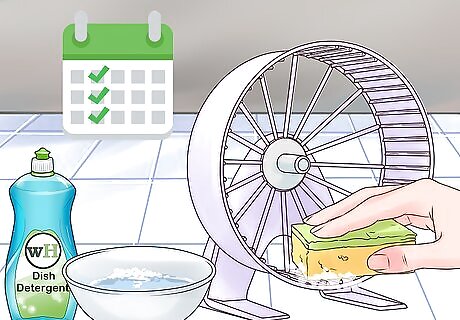
Clean the wheel on a weekly basis. Mice may go to the bathroom or eat on the wheel, so it’ll need to be cleaned regularly. To clean the wheel, remove it from its mounting in the cage. Wash the wheel with dish soap and warm water, making sure to scrub off any stains on the running surface. Some mice also like to dig underneath their wheel, which creates a mound of bedding material that can impede the wheel and stop it from turning. Clear out this mound if your mouse has dug beneath the wheel.
Giving Your Mouse a Running Ball

Supervise your mouse when it’s using the running ball. You should never leave your mouse unattended while it’s in a running ball, unless your mouse is shut in a small room. If left unsupervised, your mouse could become injured or exhaust itself, and have no way to get out of the ball. Also, to prevent your mouse from escaping from the running ball, tape the hatch shut. Unlike running wheels, there is not much variety between different types of running ball. They’re all clear plastic balls about 8 inches (20 cm) in diameter.
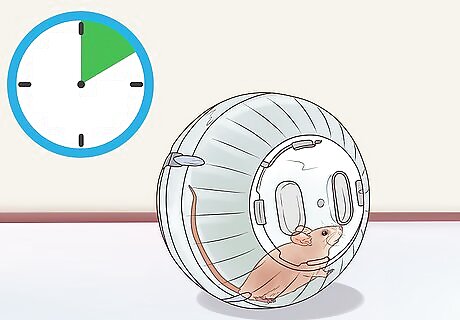
Limit your mouse’s time in the ball to 10 minutes. Do not use an exercise ball as a long-term entertainment device for your mouse. If left in the ball too long, your mouse could exhaust itself or become overheated through the constant running. Your mouse may also need a drink of water after running for 10 minutes. So, after the 10 minutes pass, pull your mouse out of the ball and place it back in its cage.

Keep the ball away from any hazards. These include things like stairs, which your mouse could accidentally roll down in its ball, and pets. Cats especially will be inclined to chase and swat at your mouse’s exercise ball, which will terrify your mouse inside. Also keep the exercise ball out of any rooms that open to the outdoors.
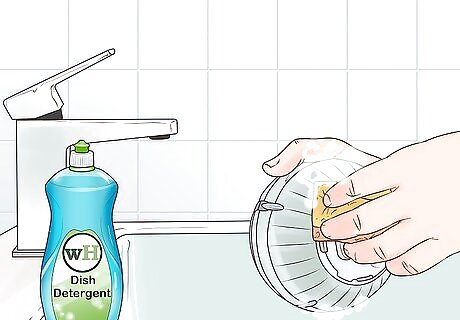
Wash the running ball after every use. As when cleaning your mouse’s running wheel, you can use hot water and dish soap to clean the interior of the ball. Fill the ball with soapy water, and use a sponge or a clean cotton rag to scrub out the inside surface of the ball. Give the running ball an especially thorough scrubbing if your mouse goes to the bathroom while it’s in the ball.
Providing Your Mouse with Toys

Hang a length of hemp rope from the top of your mouse’s cage. Mice are naturally good climbers and will happily scamper up any climbable object in their cage. Select a piece of rope that’s roughly the same length as the height of the cage, so your mouse can climb up onto it easily. Tie it around a bar at the top of the cage, and watch as your mouse starts climbing. Alternately, you can attach the hemp rope to one side of the cage, so that mice can crawl horizontally along it. You can also purchase climbable ladders and hammocks from pet stores. Install these along with multiple help ropes to create a fun climbable setup within the cage.
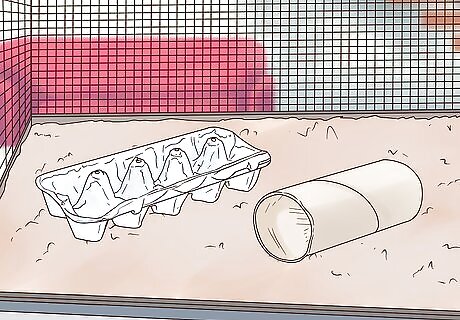
Give your mouse an egg carton or paper towel tube to chew on. Mice love chewing and will happily gnaw on cardboard products that you have around the house. Try giving your mouse 1 new cardboard item each week. Then, once the cardboard item has been chewed into multiple pieces, remove it from the cage so your mouse doesn’t eat it. While chewing on cardboard is not as rigorous a type of exercise as, for example, running on a wheel, it will still help your mouse stay active.
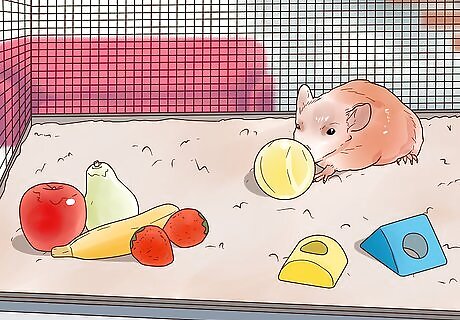
Let your mouse play with several small, movable items. These include things like wooden blocks or fruit pieces, bells, and rubber or wooden balls. Your mouse will enjoy having these items in its cage, and will exercise by playing with the toys and knocking them around. Make sure that none of the objects are small enough that they may fit inside your mouse’s mouth. In order to prevent your mouse from getting tired of these toys, rotate them out. Let your mouse play with 1 toy each week. When you are looking for mouse toys at the pet store, also check the parrot aisle. It may contain wooden blocks and bells that your mouse will enjoy playing with.















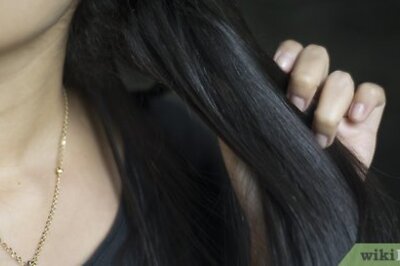


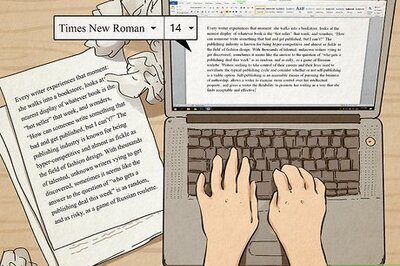

Comments
0 comment